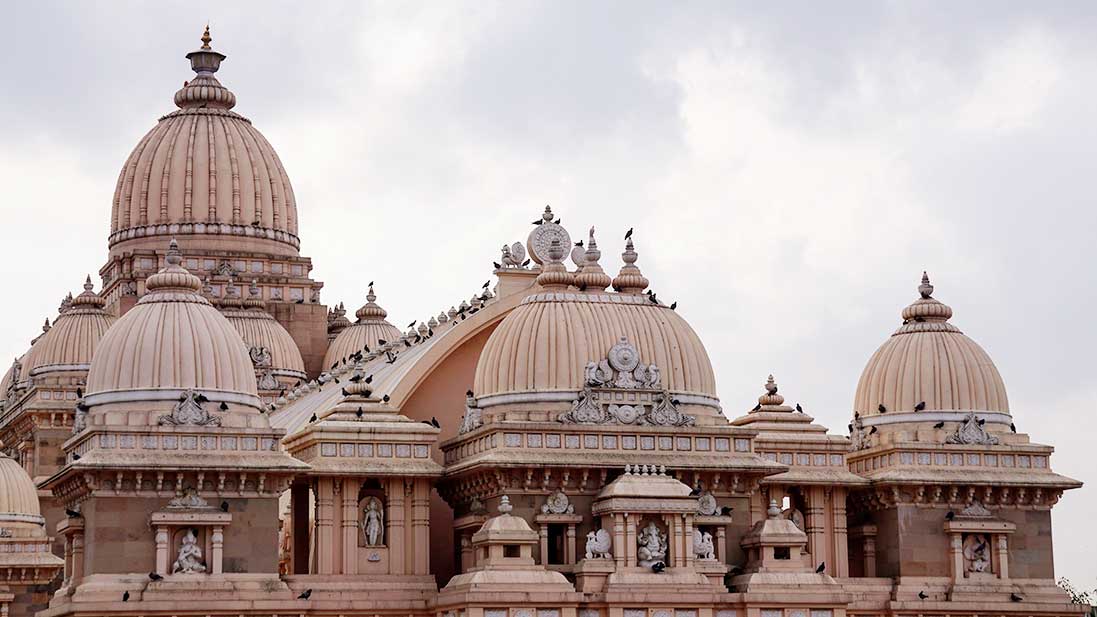Universal Temple

According to Swami Vivekananda, the temples of Sri Ramakrishna should be built for enabling the devotees to advance spiritually for realizing the truth with no hatred towards other faiths. The guidelines for building the temple of Sri Ramakrishna at Belur Math were laid down by Swami Vivekananda himself. Keeping this as basis, various other architectural features familiar to the region are added while maintaining its universal outlook. So various architectural elements and motifs found in Hindu, Buddhist and Jain temples and the churches and cathedrals of Europe are synthesized in this Universal Temple.
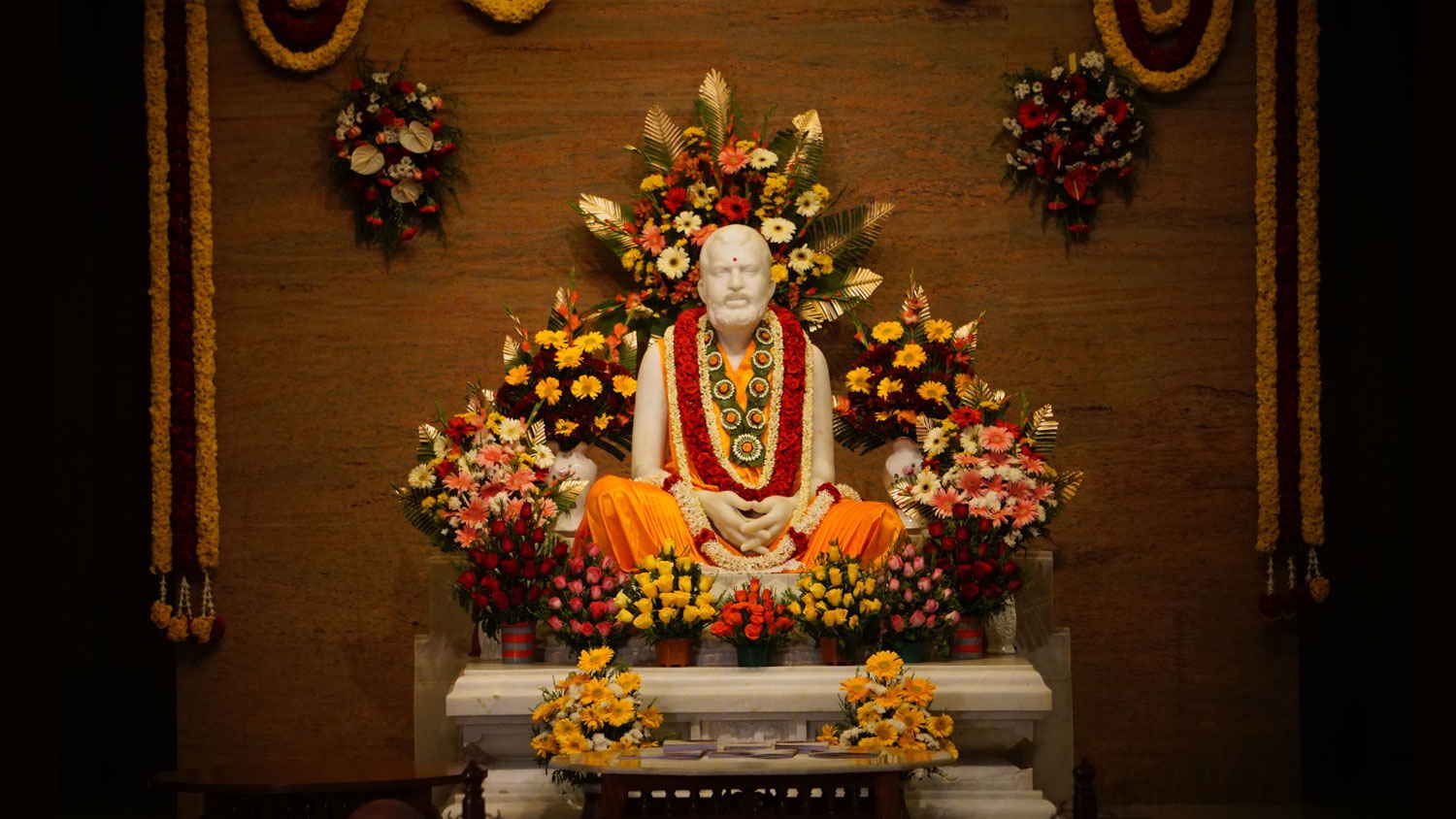
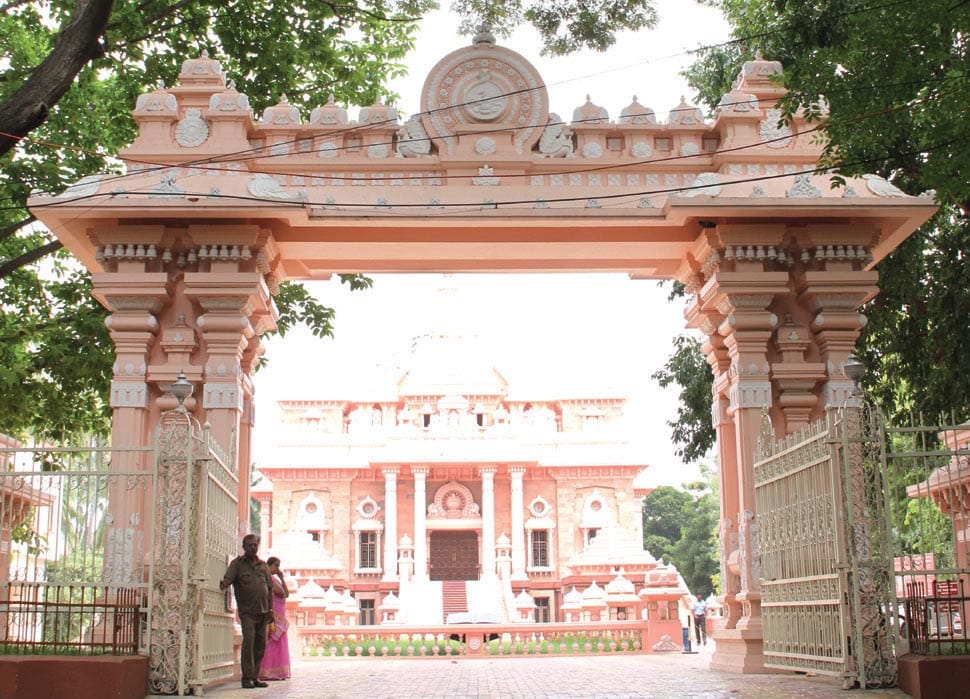
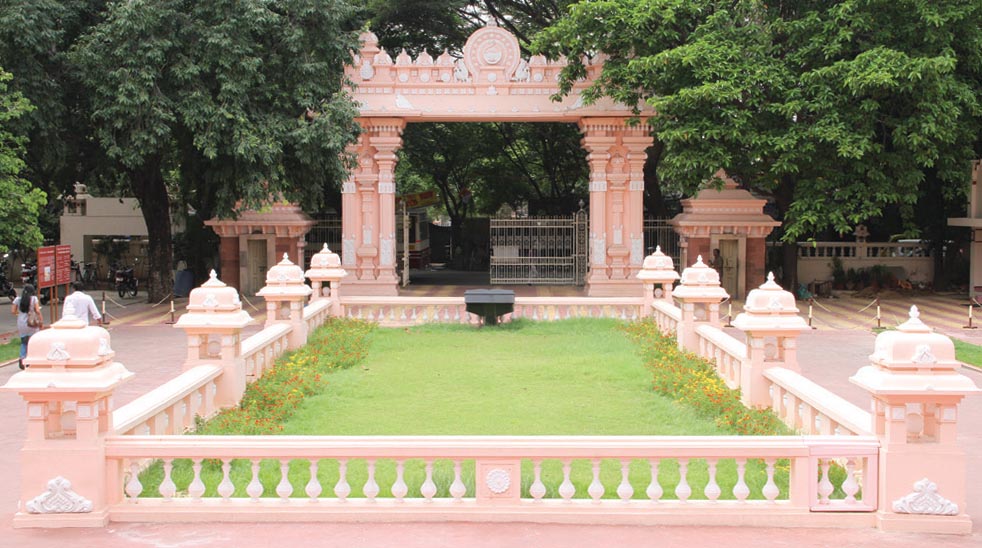

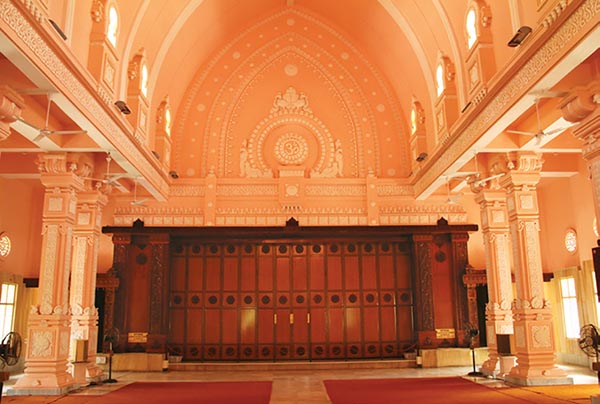
The portraits of sixteen disciples of Sri Ramakrishna with carved wooden frames are fixed to the four sides of the four central columns of the prayer hall. Up to a height of 9 feet from the floor level, the dadoes of the interior walls and the architraves of the windows are clad with marble slabs and the floor of the prayer hall is paved with white marble slabs. The ornamentation of the high gable wall surfaces (28′ x 22′) in the eastern and western ends of the vault roof over the nave of the prayer hall is based on the rock-cut Bhima Ratha at Mahabalipuram, the gables in Gothic churches of Europe and Buddhist Chaityas. The prayer hall is well lighted and ventilated by several large windows (3′.0″ x 6′.6″) and 18 small windows (1′.6″ x 3′.0″) in its vaulted roof. All these windows have been ornamented with circular arches and brackets resembling Panjara, Mukha Nasi, and Alpa Nasi motifs which are usually found in the Vimanas and Gopuras of South Indian temples. The prayer hall is also fitted with an adequate number of ceiling fans for air circulation and lights to provide soft illumination which will not distract those seated in meditation. In short, one standing at the threshold of the main entrance will be met with the inspiring view of an aesthetically enriched interior of the prayer hall focussing its lines towards the center of the shrine.

